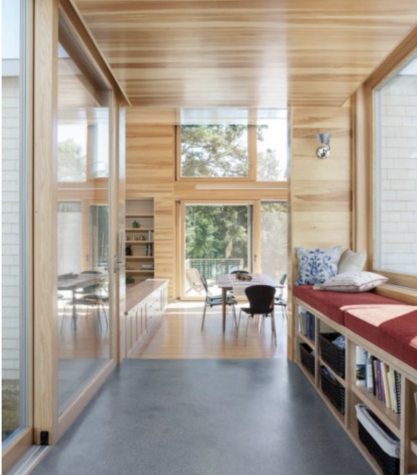Scott Simons on Using Architecture to Reflect Society
For nearly thirty years, Scott Simons has presided over changes impacting the shape—and spirit—of Portland. As the principal of Scott Simons Architects, Simons has redesigned some of the city’s most compelling landmarks, including the Portland Public Library, and as co-founder of the Portland Society of Architects (PSA), he has advocated for ordinances that protect contemporary design and strengthened the city’s architecture community. In his interview with MH+D Inside Out, Simons explains why architecture should reflect a contemporary cultural moment, rather than merely referencing history.
Q. How did you come up with the idea for the PSA?
A. When I moved here from New York City in 1989, I was surprised by how little Portland architects communicated with each other. It was strangely competitive here, because there wasn’t a lot of work. It seemed to us, the four original founders, that we should form a social group, in which we would mutually support each other and promote design excellence in the region. It was hugely successful. It continues to grow and expand and change—it’s very involved with communities and design workshops now. This group of architects, along with others, has been working hard to bring much more modern buildings to the city, so that people start to experience them.
Q. Why is contemporary design important?
A. First, it’s not truthful to design only historic reproductions. If you were a poet right now, you wouldn’t write in Old English, so why would you design a structure that matches a building done 250 years ago? PSA tries to open people’s eyes to contemporary design and get people to talk about it. It’s like learning a language. You can learn to appreciate modern buildings.
Q. Why do you think people are so resistant to change?
A. We get comfortable with what we know. Artists—including architects—challenge our comfort zone. Really, we’re just reflecting the spirit of the times. There might be some architects that are a little bit ahead of their time, but most of us are in our time, reflecting what we’re hearing, what we’re seeing. We’re participating in one large design dialogue, and all architects do is reflect that.
Q. How do you approach your work as an architect?
A. I see it as, we’re trying to solve human problems in an elegant way. If we solve the problem, then the elegant solution grows from that. A beautifully designed building that doesn’t solve the problem is a disaster. If we solve the problem, then we don’t worry about whether the building is beautiful or not. We worry about whether it works. And if it works, it’s beautiful.
Q. What’s an example of that?
A. We’ve designed 23 libraries over the years. We’ve worked on some where we had had to fix them, because they weren’t well designed, even if they looked beautiful on the outside. They didn’t work. People couldn’t find their way around. You shouldn’t need signs in a building—it should be easy to understand where to go. The Portland Public Library had over 200 signs on the first floor when we first started working on it. Now, there’s almost none. You walk in, and you can understand it.
Q. You’re also involved in protecting Portland’s waterfront. Why is that so important to you?
A. The waterfront is our most precious resource—we’re here because of that harbor. The city grew around the protected harbor. We’re just beginning to see development on the waterfront. My dream before I pass away is to help reclaim the waterfront for the people.








